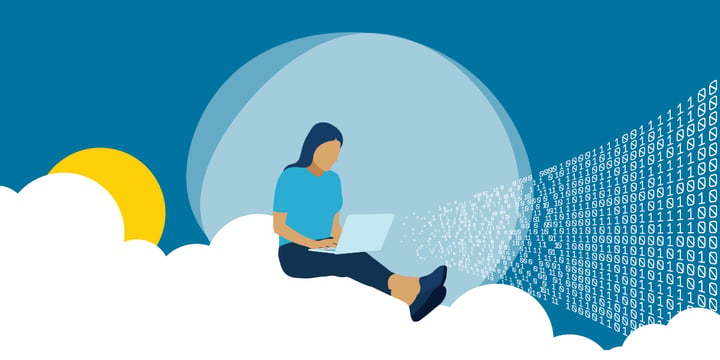ChatGPT has dominated headlines since its public launch late last year. But what is it, and how can it potentially help you and your nonprofit?

Powered by artificial intelligence (AI), ChatGPT is a large language model (LLM) that can respond to questions and commands with a stunning degree of complexity and humanlike responses, drawing information from large data sources as well as from its interactions with users themselves. In some ways, it feels like a hyperintelligent version of those chatbots that pop up and help you with your hotel reservations online.
You can use ChatGPT to save time, generate insights, and boost day-to-day productivity at your organization. We'll go over some "prompting" tips you can use, as well as some ways that ChatGPT can help nonprofits' everyday needs. We'll also cover a few limitations to be aware of when using this technology.
Before we begin, note that although ChatGPT is designed to mimic human communication and natural language, its output is almost always improved with a human touch. You should always expect to make your own edits to what it provides.
Note: The dataset that ChatGPT uses draws only from information found online through September 2021. Thus there are limitations on how it can respond with regard to recent events.
Prompting Tips
To get the most out of this type of tool, you'll go through some trial and error in order to develop the best prompts. Prompts will generally fit into these categories:
- Sentences or questions
- Code snippets or commands
- Any combination of text or code
Although ChatGPT can be used to write code, we won't be focusing on that in this post. That said, here are a few best practices to get useful, relevant responses from ChatGPT.
- Be specific and provide context. For example, if you are creating a meeting agenda, input the specific items you wish to include and who will cover them.
- Define the audience the response should address, as well as the person or organization it is coming from. A request for marketing email copy, for example, should define the target audience of the campaign and state who the email is coming from.
- Use chained prompting for more complex tasks. In chained prompting, you split the request into stages. It can help you to end up with a more accurate response that requires less editing at the end.
- Get inspiration from others. Civic Tech Field Guide is building an organized collection of prompts used successfully by nonprofits and social good organizations for ChatGPT and other AI tools. Subscribe to the email list to receive the collection of social good prompts gathered from the community and share your own if you've found success.
Using ChatGPT at Your Nonprofit
Operations
Try using ChatGPT to sidestep some of the more monotonous tasks at your organization, leaving you to simply fine-tune the raw material it provides. You could ask it to generate a report based on impact numbers, create a timeline for your next project, or draft a standard memo on office policies.
Fundraising
ChatGPT can be used to help you generate copy for various stages of the fundraising process, including social media posts, grant proposals, email campaigns, and blog posts. Simply feed it the source material it needs, including the type of copy you want, the name of your organization, and any information it might not easily glean from the Internet.
ChatGPT will also remember and learn from the earlier parts of your conversation. You can provide it with as much context as you feel is necessary to get an accurate and complete response. You can also give feedback by using the thumbs up and thumbs down buttons or by giving corrections in subsequent prompts.
Beyond creating copy for your fundraising materials, you can use ChatGPT to make suggestions and provide ideas across your strategy creation. You could ask it to suggest donation tiers, identify grants you're eligible for, or even come up with a few ideas for your next fundraising event.
Volunteer Management
The logistics, recruitment process, and scheduling involved in volunteer management can be overwhelming, especially if your organization relies on volunteers for its day-to-day needs. You can use ChatGPT to write recruitment materials, role descriptions, and contracts, as well as schedule templates, training guides, and onboarding materials.
Limitations
Remember that ChatGPT is not itself an "expert," nor will it necessarily deliver correct answers to your questions. ChatGPT can give plausible-sounding but incorrect responses, as well as biased or inappropriate ones. It may sometimes guess at what you are asking, leading to vague or insufficient answers (and remember, it only "knows" events through September 2021). There are also some plagiarism and fraud concerns, so make sure you use an external tool such as the Grammarly plagiarism checker before publishing any AI-generated content, as well as a human review.
Give It a Try Today
As is true for any tool, learning to use ChatGPT will take some time. But once you do learn, it can be a brilliant time-saving solution to help you complete basic and not-so-basic tasks at your nonprofit. By experimenting with prompts that suit your nonprofit's needs, you can boost productivity and creativity while maintaining more energy to put into pursuing your organization's mission.
Additional Resources
- See the free recording of TechSoup Courses' AI for Good: Empowering Nonprofits to Drive Impact and Ethical Innovation.
- Watch the webinar Unleashing the Power of Artificial Intelligence to Transform Your Nonprofit.
- See presentations on How Nonprofits Can Use AI and Automation for Good.
- Learn How Museums Use AI and Tech to Improve Visitor Experiences.
Top photo: Shutterstock







